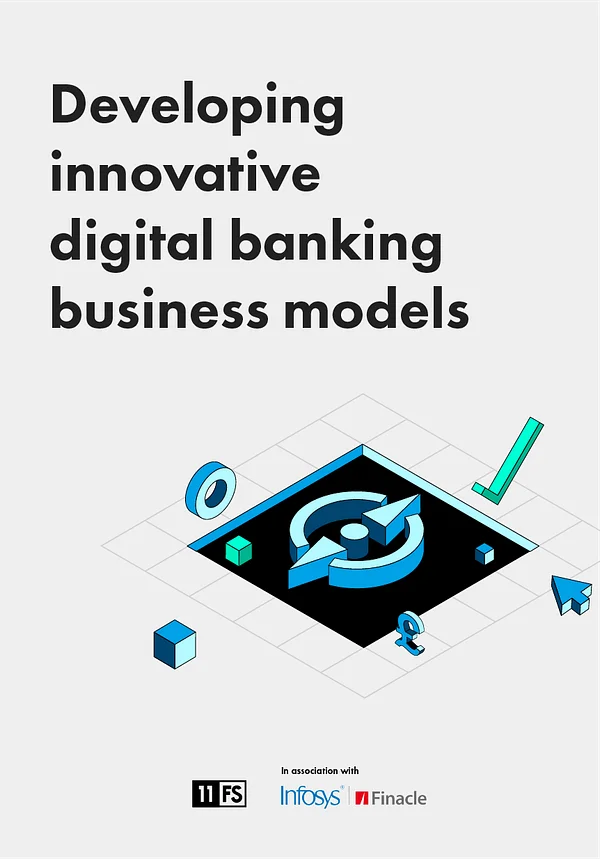At one of our Truly Digital After Dark events, Anne Boden said “if you call yourself digital, you’re not digital”.
This quote really resonated with me, because all too often in fintech (as in life), we see that those who shout the loudest about their ‘digital transformations’ or ‘radical changes’ are not the ones truly making the biggest difference. At 11:FS we have been exploring what it means to be truly digital since the beginning. Becoming truly digital means shifting not just what you do but how you do it across your value chain and operating model.
10x better service, 10x better at solving the user problem
Digital isn’t about being on a screen or any particular technology; it’s about getting to an order of magnitude better in service, in understanding and addressing user needs. The digital R.I.C.H.E.S. model, at the heart of 11:FS, outlines the specific virtues that distinguish truly digital propositions: Real-time, Intelligent, Contextual, Human, Extended, Social. These human-centred and value driven principles set up a framework to evaluate ‘truly digital’ products and determine if they are likely to be a real innovator or just a clever follower.
> David, our CEO, explains digital RICHES further in this 11min video.
But what does this mean for product management, and product managers? How can product designers and innovators shape products and propositions that are truly digital, with the tools and platforms available to them? And within the constraints of business goals and customers’ needs?
Does it matter if you’re truly digital or not?
First of all, we’re here for the cause of being truly digital, so obviously we’re going to say it matters - but not because it sounds good, or makes a zingy quote. It matters for the same human-centred reasons that lead many of us into product management in the first place: to create better products that serve customers and create value. And why does it matter if you *call* yourself truly digital? Well, to badly repurpose William Gibson’s famous quote, in financial services, the digital revolution is here, it’s just not evenly distributed yet.
The digital revolution isn’t even about technology, really…it’s about solving problems in a radically different way. It’s creating everyday service levels previously only available to the very wealthy or privileged -- and achieving huge efficiencies along the way, reduction of cost, or increase of scale effects.
PLUS we know that when customers are served by truly digital products, they benefit from vastly more convenient, and often cheaper and fairer services. Think of how Uber made access to private car service so much more accessible, or how Netflix freed television viewers from the constraints of the TV schedule. Not to mention the huge opportunity that exists in being part of a wave of products that have the chance to really innovate and make a difference. But just calling yourself truly digital without actually doing it will catch up with you, we promise.
Adding value digitally is about more than converting existing experiences to an online or app-based product.
Fine, what does this mean for product?
Adding value digitally is about more than converting existing experiences to an online or app-based product. It’s about understanding user problems and aligning them to business capability in order to create value. Customers know when a feature doesn’t really make a difference, they can sniff out ‘pretty faces’ that have a great design or ad campaign, but a product that doesn’t really solve their problem or deliver the brand promise.
It’s definitely easier to digitise a solution rather than make it truly digital. Digitising could be as simple as making what used to be a paper-based form into an app-based one, or it could be changing a monthly statement to a nicely designed digital one. Receipts that get emailed to you are an example of digitisation in the payments world: way better than your pockets and bag filling with slips of paper, but then you just move the clutter to your inbox, and have to trust merchants with your email address at the same time.
And behind the scenes, truly digital companies have these practices baked into their culture and mission, their teams are empowered to think of customer problems and not just short term solutions. This is where the space for innovation starts to emerge; with the customer problem.
A product’s success is about solutions, but you get there by focusing on problems
So as we form propositions, strategies and roadmaps, let’s commit to the following:
- Products to services: First, look at your product with a critical eye. Are you part of the movement from a product to a service? Products are closer to things that people commit to, and services are enablers that become more and more seamless over time.
- Love the problem: As creators, we can get so caught up in what we’re building, and while it’s important to focus on the product, we must always remember that the real reason for everything is the user’s problem, not our solution. Love the problem, not your solution (with thanks to Ash Maurya for continual inspiration here).
- Waste reduction: Taken from the kaizen practice of continuous improvement, I think this is an underrated part of great product management, and one that can be applied to the journey to become truly digital. Walk through your products feature set, and the roadmap, then reduce or eliminate any items that look like lazy digitisation, features for the sake of it (e.g. we must have parity with the previous website, etc), or features that don’t really serve the customer problem.
- Digital R.I.C.H.E.S.: Rate your product against the six points - Real-time, Intelligent, Contextual, Human, Extended, Social, and make sure that your product is meaningfully moving on these fronts while also solving customer problems. If you don’t think all of them apply to you, ask yourself why not, and challenge yourself to fully consider all six of the values.
- Identify your feature metrics vs macro metrics:Many product metrics are about individual feature or unit performance, and ultimately about the bottom line. These are important measures, but over time you’ll want to make sure you can assess the bigger impact of your product. So identify the truly digital goals of your product proposition, and make sure you include that in your product metrics.
As creators, we can get so caught up in what we’re building, and while it’s important to focus on the product, we must always remember that the real reason for everything is the user’s problem, not our solution.
Use your powers for good
Product managers are generally empowered to influence their products through the lenses of scope, priority, and most importantly for this discussion, quality. Use the methods above to consider the value and impact of every product feature and decision you make. Measure them against the 10x value add of a truly digital product, and if they don’t contribute towards it, challenge yourself to explore why not.
So, at the end of the day does it matter if you call yourself digital or not? To be honest, what you call yourself is way less important than whether or not you’re focused on being truly digital, in how you work and think.
But don’t fool yourself into thinking the job is done. If you’re talking about it more than you’re living it, then you’ve probably left some customer value on the table, and there’s work to be done yet.





.svg)
.svg)






